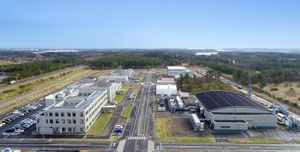The Broader Approach
The Broader Approach activities aim at supporting the ITER project and at an early realization of fusion as a clean and sustainable source of energy for peaceful purposes. They comprise the following three large research projects to be jointly implemented:
The Satellite Tokamak Program, also known as JT-60SA, a major modification of the existing JT-60U at Naka, reusing most of the infrastructure, but with a new machine: its magnet will be a full superconducting one (2.6 T on the axis) and its plasma will have a volume of about 110 m3. Duration of discharges will be 100 s on flattop and the heating system will provide 41 MW power (34 MW of neutron beam injection and 7 MW of electron cyclotron power). This tokamak will address key physics issues for ITER and DEMO. The International Fusion Energy Research Centre (IFERC), with three main components: A supercomputer, enabling calculations for ITER plasmas, advanced scenarios, materials and DEMO conceptual activities, A remote experiment centre, usable for both ITER and JT-60SA, An R&D centre for DEMO, in particular for its concepts, low-activation materials and breeding blanket technologies.
The IFMIF/EVEDA project: International Fusion Materials Irradiation Facility / Engineering Validation and Engineering Design Activities, with the goal to deliver in 2013 the design file of IFMIF, enabling its rapid construction (similarly to ITER EDA). This design file will be validated by the construction and the operation of prototypes, representing the most challenging innovations of the project: the low energy part of the deuteron accelerator, the liquid lithium target and the high flux module of the test facilities.
The two last projects are located in Rokkasho, Aomori prefecture in Japan. They involve several "Voluntary Contributing Countries" in Europe, the JAEA and several Universities in Japan. They are implemented through the Domestic Agencies created in the framework of the ITER Treaty: Fusion for Energy in Europe and JAEA in Japan. This agreement is open to other ITER Members. Applicable conditions will be presented at the next ITER Council to be held in Aomori city mid-June 2008.


